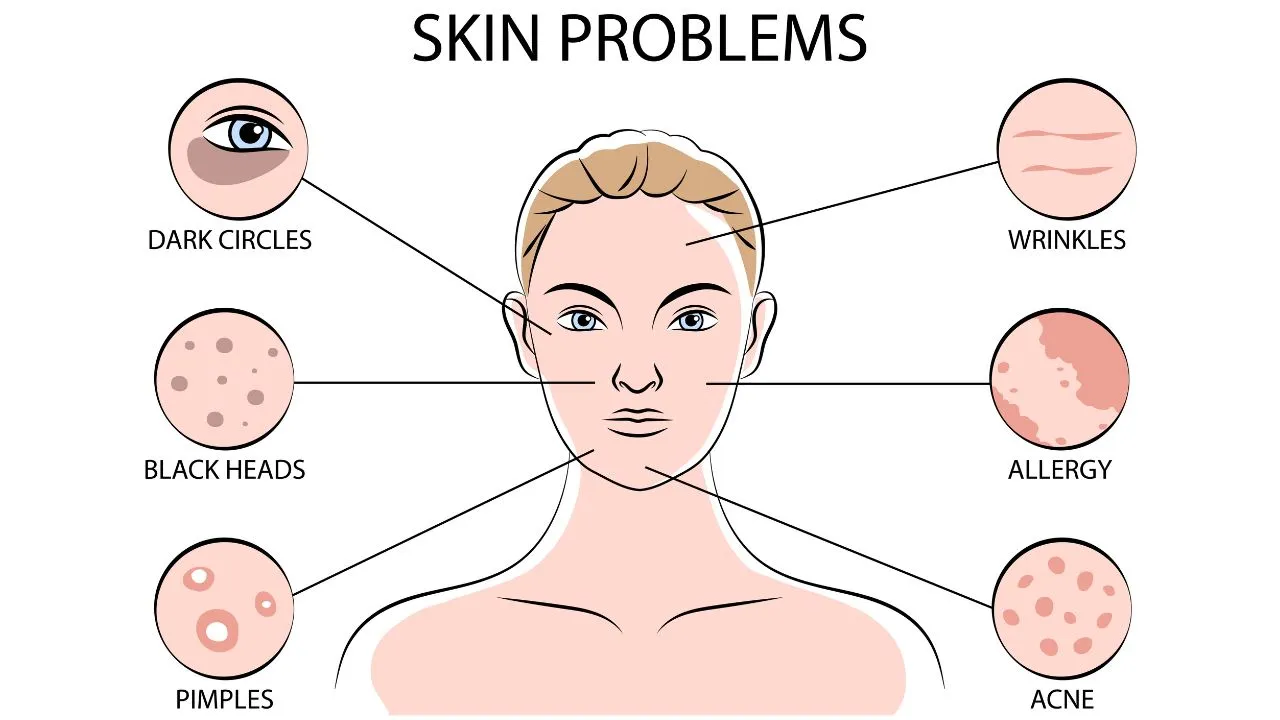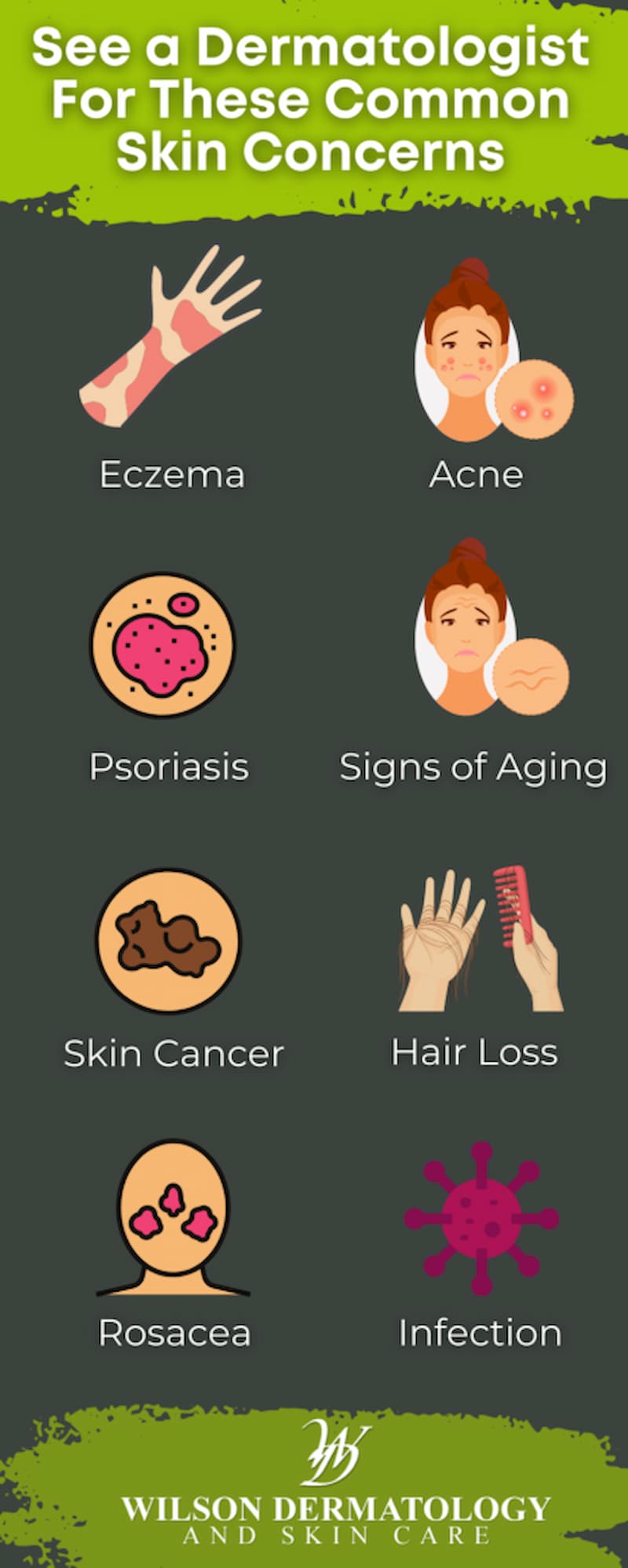Thorough Dermatology Expertise: Addressing Acne Issues, Mole Issues, and Dermatitis Effects
When it involves skin wellness, detailed dermatology understanding is key; it empowers individuals to tackle common skin concerns such as acne, mole irregularities, and dermatitis with self-confidence. Understanding acne treatments, recognizing prospective skin cancer cells indications in moles, and taking care of dermatitis triggers can significantly improve skin health - eczema specialist. This short article will explore these topics, providing an insightful check into the scientific research behind these usual skin problems - an exploration that guarantees to inform and educate
Understanding the Basics: What Is Acne, Moles, and Dermatitis?
While lots of people may know with the terms acne, moles, and dermatitis, understanding what they actually are is a various matter entirely. Acne is a skin problem identified by irritated or infected oil glands, often visible as pimples or areas, primarily on the face, back, and upper body. Moles, on the various other hand, are little skin growths triggered by collections of pigmented cells; they can show up anywhere on the body and differ in color and size. Lastly, eczema, also called atopic dermatitis, is a chronic condition causing irritated, itchy skin, frequently happening in reaction to toxic irritants or irritants. While these conditions are usual, they can have varying degrees of intensity and influence on a person's life.
The Scientific research Behind Acne: Causes, Kinds, and Treatments
The complicated scientific research behind acne begins with recognizing its formation device. This elaborate procedure, influenced by different factors, leads to various types of acne. The write-up will likewise discuss efficient treatments available to handle and treat this usual skin problem.
Acne Formation System
A frustrating bulk of people will certainly experience the common skin condition understood as acne eventually in their lives. Acne development starts with the overproduction of sebum, an oily substance secreted by sebaceous glands in the skin. This excess sebum, in addition to dead skin cells, obstructs the skin's pores. When these clogged up pores become contaminated with Propionibacterium acnes, a germs normally existing on the skin, inflammation occurs, causing noticeable acne. There are different kinds of acne, consisting of blackheads and whiteheads (non-inflammatory), and papules, pustules, nodules, and cysts (inflammatory) Hormonal adjustments, especially during the age of puberty or menstruation, can aggravate acne by activating enhanced sebum manufacturing. Recognizing this device is crucial for developing reliable therapies, a subject to be gone over later. eczema specialist.

Reliable Acne Therapies
Nearly everyone will grapple with acne at some point, making a clear understanding of effective acne therapies important. Various treatments target different elements of acne, such as inflammation, oil production, and germs. It's crucial to bear in mind that not all treatments will certainly function for everyone, as acne's causes and intensity vary.
Mole Issues: Recognition, Examination, and When to Seek Clinical Interest
Moles, typical skin developments, require careful identification and routine evaluation for optimal skin health (acne treatment). Identifying the typical appearance of one's moles, in addition to any changes that may occur, is essential. Motivate clinical interest ought to be sought when certain signs, which will certainly be discussed, are discovered
Recognizing Mole Identification
How does one compare a safe mole and one that may call for medical attention? Recognizing the attributes of normal moles is crucial. A regular mole is typically round or oblong, has a smooth edge, and is no bigger than 6mm in diameter. The shade ought to be regular and can vary from pink, tan, brownish, or black. Moles normally appear throughout childhood or teenage years, and by adulthood, the majority of people have in between 10 to 40 moles. Moles that alter in dimension, shape, or color, come to be itchy or bleed, or show up after age 30 can be worrying. These abnormalities don't immediately show skin cancer however are factors to speak with a skin doctor. Understanding mole recognition is the very first step in skin health and wellness monitoring.
Executing Normal Mole Examinations

Recognizing Important Clinical Signs
When should one look for clinical attention concerning moles? It is vital to consult a skin specialist as soon as abnormal features are observed. These might consist of asymmetry, irregular borders, differing shades, a size bigger than 6mm, or evolving size, shape, or color. Called the ABCDE's of mole analysis, these changes may indicate deadly cancer malignancy, a deadly form of skin cancer. Additionally, any type of bleeding, itching, or non-healing sores connected with moles necessitate instant medical interest. An individual must likewise be mindful if brand-new moles show up after the age of 30 or if there's an abrupt rise in the variety of moles. Routine soul-searchings combined with specialist analyses make sure very early discovery and efficient treatment of prospective skin irregularities.
Dermatitis Explained: Causes, Symptoms, and Taking Care Of Flare-Ups
Although dermatitis may show up as a basic skin inflammation to the inexperienced eye, it is, in reality, a complicated skin-related problem with a wide range of possible causes. Eczema, likewise referred to as atopic dermatitis, is generally triggered by a combination of hereditary and environmental variables. Signs can range from light dryness and irritation to serious breakouts and inflammation. Triggers might vary in between individuals, yet typical ones consist of allergens, toxic irritants, and tension. Taking care of eczema commonly includes identifying and staying clear of triggers, maintaining an excellent skin care regimen, and using recommended therapies. Due to the chronic nature of dermatitis, flare-ups might still take place even with careful monitoring. The secret description is to resolve these flare-ups without Read More Here delay to avoid aggravating signs.
Practical Skin Care Tips to stop and Handle Acne, Moles, and Eczema
Comprehending and attending to skin problem such as acne, moles, and dermatitis call for sensible and reliable skin treatment behaviors. Normal cleaning with mild, non-irritating items assists preserve skin health and wellness and stop acne. Sun block application minimizes mole danger and reduces eczema flares set off by sun exposure. Hydrating, specifically for those with dermatitis, is crucial to preserve skin hydration and barrier function. A well balanced diet regimen abundant in antioxidants can enhance skin health and reduced swelling, possibly reducing acne and dermatitis extent. Routine skin checks help in early mole detection, possibly stopping skin cancer. While these suggestions can mitigate skin troubles, they're not an alternative to expert dermatological advice. Constantly get in touch with a skin specialist for consistent or severe skin problem.
Professional Dermatology Treatments: A Review of Modern Solutions
Dermatologists today have a broad variety of reliable therapy options to deal with various skin conditions. With moles, expert removal is executed if they pose a health and wellness danger. All these therapies are under the professional support and treatment of skin specialists, ensuring secure and website here effective administration of skin problems.
Conclusion
Acne management needs knowledge of numerous treatment alternatives, while mole evaluation can lead to very early detection of skin cancers cells. Thorough dermatology knowledge is vital for avoiding and taking care of these skin conditions, stressing the need for expert dermatologist treatment to boost skin health and wellness.